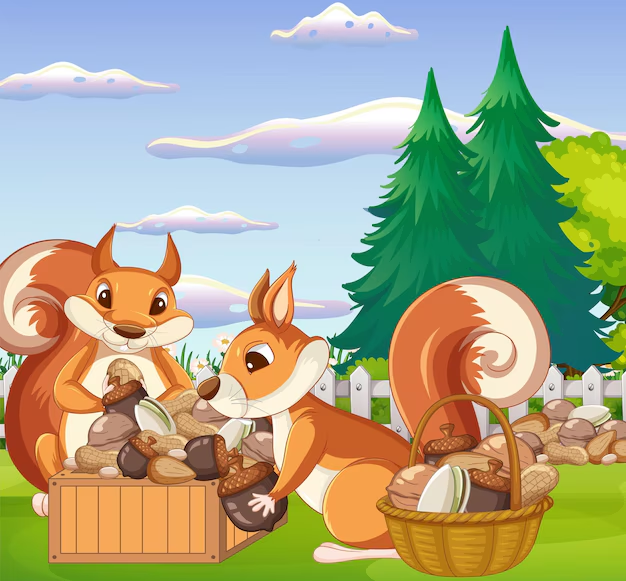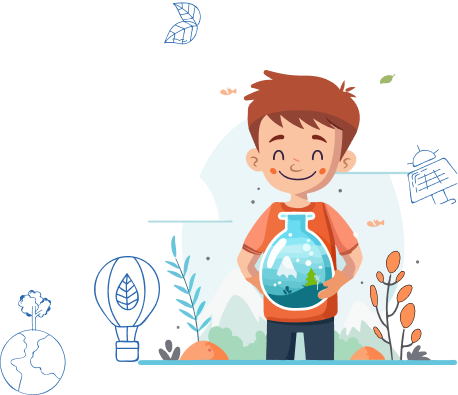Living in Harmony – A Complete Guide For Class 3 EVS Chapter 6
Welcome to iPrep, your Learning Super App. Our learning resources for Chapter 6, “Living in Harmony,” in Class 3 EVS are designed to build a deep understanding of living in balance with nature and the community. These resources offer comprehensive coverage, including interactive activities, visual aids, and examples that bring core ideas to life. From exploring the importance of environmental care to fostering relationships through teamwork and empathy, the materials ensure that students grasp essential principles of coexistence, eco-consciousness, and respect for all living things, encouraging holistic learning.
The concept of “Living in Harmony” in Class 3 EVS emphasizes living in balance with nature, people, and our surroundings. It explores the idea of understanding and respecting the environment, fostering empathy towards plants, animals, and fellow humans. By engaging in cooperative and eco-friendly practices, students learn the importance of sustainability, peaceful coexistence, and how to minimize harm to nature. This concept helps children recognize their role in maintaining the delicate balance that sustains life on Earth. Let’s understand the objectives of learning the chapter Living In Harmony from class 3 EVs in detail.
Objectives of Learning the Chapter – Living In Harmony
The objectives of learning Living in Harmony in Class 3 EVS are to help students understand the importance of coexisting peacefully with nature, animals, and people. It aims to foster empathy, teamwork, and eco-consciousness by teaching children how to care for the environment and respect all living beings. Through this chapter, students will develop an appreciation for sustainable practices, learn about the interdependence of plants, animals, and humans, and recognize their role in maintaining harmony in their surroundings.
Do any animals, birds, insects, or plants live with you in your house?
Take a moment to observe your surroundings—do you notice animals, birds, insects, or plants living in harmony at your home? Maybe you’ve seen a pigeon on your windowsill or ants sneaking into your kitchen. If you do, think about how you and your family take care of them.

Have you seen any other creatures not listed?
Here’s a table to record your findings:
Name of the Animal The place where you have seen them Monkey Tree
Sharing Our Space with Nature
Sometimes, we bring plants and animals into our homes on purpose, like pets or houseplants. However, there are times when they find their way into our space unexpectedly for living in harmony.
Stories from Elders
Talk to the elders in your family—what animals or plants did they have in their homes when they were young? They might have interesting stories to share.
Discussing Uninvited Guests
Further in Class 3 EVS chapter 6 “Living in Harmony”, we” be discussing the uninvited guests. While some creatures are welcomed into our homes, others are uninvited visitors. Discuss in pairs:
- Which animals, birds, and insects visit your home uninvited?
- Why do you think they come?
- How do you feel about their presence, and what do you do if you don’t like them?
It’s important to note that even if we don’t like some of these creatures, we should avoid harming them. Most animals don’t cause harm unless they feel threatened.
The Story of the Mango Tree
Once, a boy named Shambhu was in the forest with his father. They sat under a mango tree that provided shelter to birds, squirrels, and monkeys. Shambhu’s father explained that animals and plants help each other. For example, when the monkey threw out a mango seed, a new plant would grow from it.
How Plants Benefit Us

We depend on plants for so many things—fruits, vegetables, fresh air, shade, and even medicines. Here’s a table showing what plants give us:
Uses of Plants Fruits Fresh air Shade Shelter for animals Medicines Fibre for clothing Wood for building
How Do We Depend on Each Other?
Plants and animals need each other for food and shelter. For example, squirrels accidentally plant trees by forgetting where they buried their nuts. Animals like cows, goats, and buffaloes give us milk and companionship. We, in return, care for them.

Activities to Deepen Understanding
1. Get to Know an Animal
Choose an animal you often see, like a cow, dog, cat, or bird. Observe it closely and write a short description:
- Name and describe the animal or bird.
- Where did you first see it? Was it alone or with others?
- What sounds did it make?
- Did you notice anything funny or surprising?
2. Clever Ants
Here’s a fun experiment you can try at home. Take three types of food—something sweet like sugar, something fried like papad, and something boiled like rice. Place them on the ground and observe which food the ants come to first. Try answering these questions:

- Who will come for the food?
- Which food will they choose?
- How many ants will come, and what will they do with the food?
Reflecting on Our Connection to Nature
A. Discuss
- How are we dependent on plants and animals?
- How should we care for the plants and animals in our surroundings?
- How do plants and animals depend on us?
B. Write
Complete the following sentences:
- I like looking at ___________ because ___________.
- __________ make me laugh because ___________.
- My friend ___________ likes ___________ because ___________.
Valparai’s Special Guests – Grey Wagtails
In Valparai, Tamil Nadu, the arrival of the Grey Wagtails marks a joyful season for both children and teachers. Each winter, these beautiful birds migrate from their northern habitats to enjoy the milder climate of Valparai. The community welcomes their feathered visitors with great enthusiasm, putting up colorful posters and sharing sweets among themselves. This annual celebration highlights the significance of the Grey Wagtails in the local ecosystem and fosters a sense of unity and appreciation for nature among the students.

Have you ever observed how birds, like the Grey Wagtails, migrate to different areas during specific seasons? Such migrations are remarkable events in the natural world, showcasing birds’ incredible journeys in search of food and suitable habitats. In many regions, communities celebrate these seasonal changes, recognizing the importance of these avian guests and their role in maintaining ecological balance. The arrival of migratory birds reminds us of the intricate connections between nature and our daily lives, inspiring us to appreciate the beauty and diversity of wildlife around us.
Conclusion
In conclusion, Chapter 6, Living in Harmony, for Class 3 EVS, teaches invaluable lessons on how we can coexist peacefully with nature, animals, and our community. This chapter encourages students to recognize the importance of environmental care and empathy, reinforcing the need for a balanced relationship with all living beings. The activities and stories in Chapter 6, Living in Harmony, offer students practical insights into teamwork, respect for others, and eco-conscious living. As students explore Chapter 6, Living in Harmony, they learn to appreciate the interconnectedness of life and their role in preserving it. Through this chapter, Living in Harmony, young learners are guided toward becoming more thoughtful, responsible members of their communities and the natural world.
Practice questions on Chapter 6 - Living In Harmony
Get your free Chapter 6 - Living In Harmony practice quiz of 20+ questions & detailed solutions
Practice Now








